

Mount ain Ecosystems for a Resilient Future
Policy Pathways under the Conventions on Biological Diversity (CBD) and Climate Change (UNFCCC)
1. Introduction
Mountain ecosystems are among the most sensitive and rapidly changing environments on the planet, facing compounding pressures from climate change and biodiversity loss. Mountains provide vital ecosystem services such as water regulation, carbon storage, and habitats for unique biodiversity and agrodiversity, while supporting the livelihoods of around 1.2 billion people, including Indigenous Peoples and local communities. Their conservation and sustainable management are essential for achieving national commitments and global targets under both the Convention on Biological Diversity (CBD) and the United Nations Framework Convention on Climate Change (UNFCCC).
The interconnected impacts of climate change and biodiversity loss are especially pronounced in mountain regions, where rising temperatures, glacial retreat, shifting species ranges, and land-use changes
increase ecosystem vulnerability. Addressing these dual crises requires integrated approaches that acknowledge the interdependence of climate and biodiversity action. Ecosystem-based adaptation and nature-based solutions in mountains offer powerful, scalable tools to enhance resilience, support mitigation, and sustain critical ecosystem functions.
Elevating the role of mountains in global climate and biodiversity agendas is essential to ensure these vital regions receive the attention and resources they urgently require. Embedding mountain-specific actions within national instruments, international policy frameworks and financial mechanisms helps countries meet global commitments, mobilizes resources, and ensures that mountain conservation contributes measurably to global biodiversity and climate goals, while ensuring benefits that extend far beyond mountain borders.
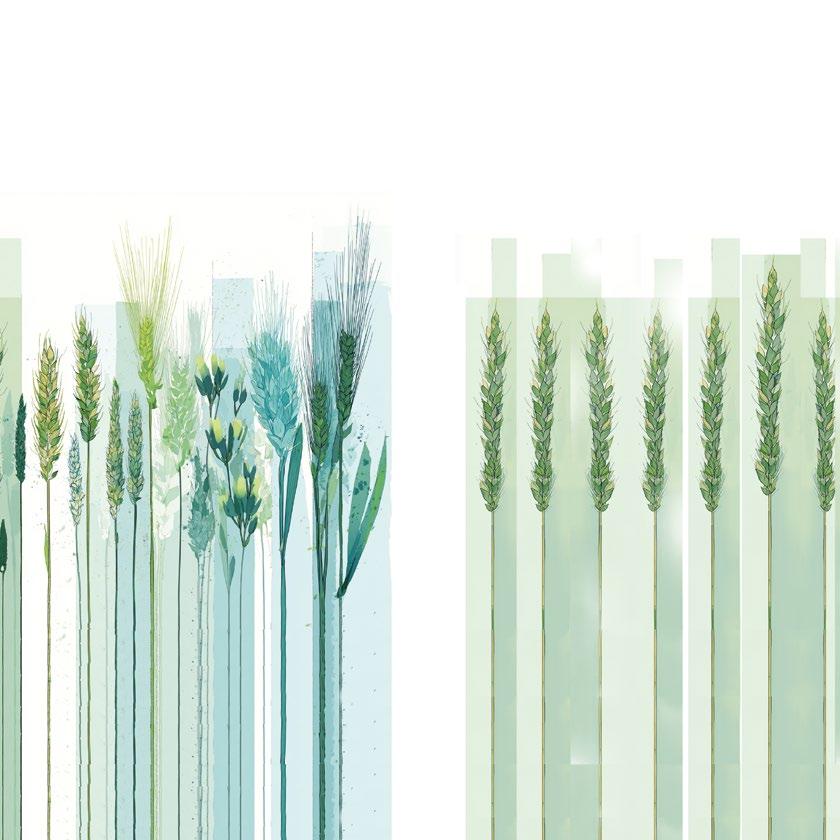
Mountains host 25 out of the world’s


30 percent of all key biodiversity areas are in mountains


Mountains cover
27 percent of the Earth’s land surface
2. Setting the scene: the conventions
Mountain ecosystems play a pivotal role in bridging the climate and biodiversity agendas, offering a natural entry point for enhancing coherence between the CBD and the UNFCCC. Their ecological complexity makes them highly vulnerable to climate change, while also positioning them as critical strongholds of global biodiversity, carbon sinks, and water and climate regulation.
Within the CBD, mountains have long been recognized as priority ecosystems. The Programme of Work on Mountain Biological Diversity, adopted in Decision VII/27 (2004), established the first comprehensive international framework for the conservation and sustainable use of mountain ecosystems. Even today, the Programme’s goals remain highly relevant under the Kunming-Montreal Global Biodiversity Framework (GBF). Several Parties and stakeholders have underscored the need to revitalize and strengthen the mountain agenda, including through the identification of mountain-specific indicators, the promotion of ecosystem-based approaches to adaptation and mitigation, and the inclusion of mountain-relevant targets in National Biodiversity Strategies and Action Plans (NBSAPs).
At COP16 (Cali, 2024), Decision 16/22 on Biodiversity and Climate Change reaffirmed the interdependence of biodiversity loss and climate change and explicitly called for stronger integration for increased synergies between the CBD and the UNFCCC. Within this broader mandate, mountain ecosystems represent a strategic entry point for integrating the two agendas, offering opportunities for integrated, rights-based, ecosystem-based approaches and nature-based solutions.
Momentum has also been built under the UNFCCC. The first Global Stocktake (2023) recognized the vulnerability of mountain regions and the need for stronger adaptation measures. This was followed by the SBSTA 60 Expert Dialogue on Mountains and Climate Change (Bonn, 2024), which brought
together Parties, Indigenous Peoples, scientists, and regional platforms to share region-specific challenges and solutions. The dialogue reinforced momentum generated by the Nairobi Work Programme (NWP), which introduced a thematic focus on mountains, high-latitude areas and the cryosphere in 2022 to strengthen knowledge-sharing and inform adaptation planning. This thematic area provides a critical platform for Parties and observers to ensure that mountain-specific knowledge and evidence are incorporated into NWP outputs in 2025 and beyond, thereby strengthening the relevance of global adaptation planning for high-altitude ecosystems and communities.
Mountains were further emphasized under the Global Goal on Adaptation (GGA) at COP28 (Dubai, 2023), particularly through the core elements of ecosystems and biodiversity. Parties and expert groups are currently developing indicators to track progress under the GGA, and mountain ecosystems are being considered for inclusion due to their high exposure to climate risks and their essential role in supporting biodiversity, water security, and livelihoods.
These developments align with the priorities of the COP30 Presidency, which has called for stronger integration of biodiversity considerations into climate action, particularly within NDCs and adaptation plans. Countries such as Colombia and Brazil are actively promoting greater consistency between the CBD and UNFCCC processes, advocating for joint decisions that embed biodiversity outcomes in climate strategies and vice versa.
By embedding mountain priorities into both the CBD and UNFCCC frameworks, Parties can accelerate progress toward integrated, nature-based solutions that deliver both resilience and conservation outcomes. Recognizing the unique vulnerabilities and global significance of mountain ecosystems ensures they are no longer overlooked in international policy frameworks.
3. Key messages: the role of mountain ecosystems in achieving CBD and UNFCCC goals
1. Mountain ecosystems harbor unique and exceptionally rich biodiversity
Mountains cover 27 percent of the Earth’s land surface, host 25 out of the world’s 34 biodiversity hotspots and 30 percent of all Key Biodiversity Areas. Their biological richness, essential for maintaining ecosystem integrity and resilience, is shaped by diverse topography, varied climate conditions, geographic isolation, cultural diversity, and moderate natural disturbance.

The South Caucasus: A Biodiverse Ecoregion with Land Use Challenges
The South Caucasus hosts thousands of plant species and endemic animals - more than 1.3% of the world’s flora is found in Georgia, up to 40% of the region’s plant species are regional endemicsas well as a wide variety of climate zones, including moderate alpine peaks and semi-arid plateaus. These ecosystems support a globally significant amount of biodiversity, boasting 17 amphibian species, 73 reptile species, 58 rodent species, 14 insectivore species, and thousands of flowering and
vascular plants - contributing to a particularly high species diversity for the region. Unfortunately, this unique biodiversity is highly exposed to various risks from climate change - reduced water availability, glacier retreat (23% loss since 2000), and conversely increased heavy rainfall events that lead to risk of landslides and erosion. These risks compound with poor land use management and land conversion for agriculture which exacerbate the existing challenges in the region.
Guli Pass, Upper Svaneti, Georgia,
© Maritxu22, Alamy
2. Mountain biodiversity is essential for climate resilience and ecosystem stability
Mountain biodiversity is a cornerstone of global climate resilience, sustaining essential ecosystem functions such as water regulation, carbon storage, nutrient cycling, and soil stabilization. As climate change and land-use pressures intensify, mountain species—often adapted to narrow ecological niches—serve as earlywarning indicators of environmental stress and ecosystem degradation.
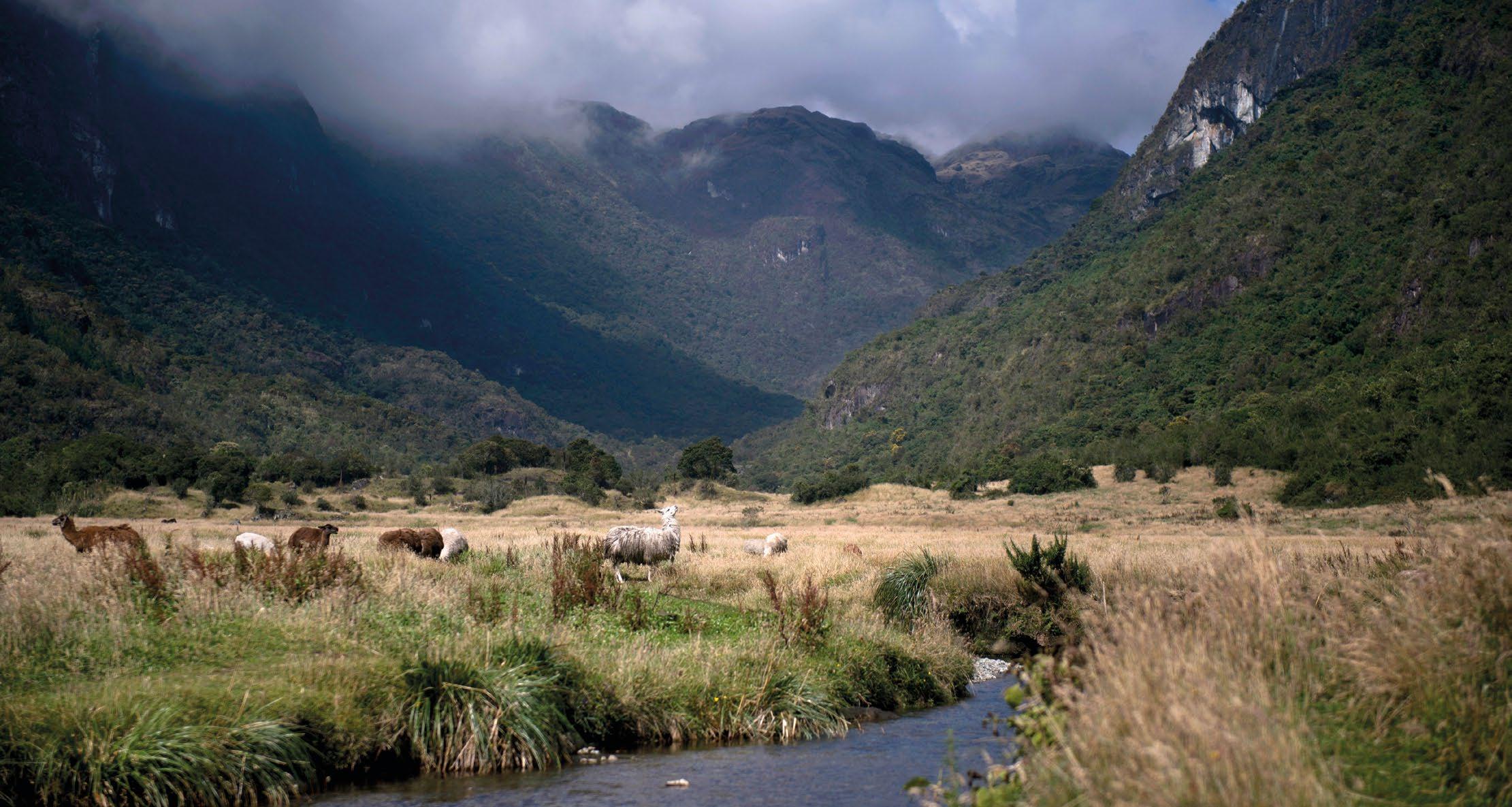
The Andes exemplify the role of mountain ecosystems in sustaining both highland and lowland societies. High-elevation systems—such as páramos, puna grasslands, cloud forests, and peatlands—regulate freshwater flows, stabilize soils, store carbon, and provide culturally significant landscapes. These ecosystems supply water to millions through yearround streamflow that feeds major rivers across Colombia, Ecuador, Peru, and beyond. Mountain agrobiodiversity, including native crops like quinoa and potatoes, contributes to food security and resilience to climate variability.
However, these services are under increasing threat. Rising temperatures, glacial retreat, altered precipitation, and unsustainable land use and resource extraction are degrading mountain integrity.
Projections indicate that tropical glaciers could lose up to 98% of their extent under high-emission scenarios, undermining dry-season water availability for urban, agricultural, and energy needs. Soil compaction, erosion, and fragmentation—driven by agriculture, grazing, and infrastructure—further reduce infiltration and exacerbate flood risks.
Páramos and peatlands are particularly vulnerable. These ecosystems store up to 1,400 tons of carbon per hectare and are critical for both mitigation and water regulation. Yet warming and land degradation accelerate organic matter decomposition, releasing CO₂ and impairing water storage. Degraded vegetation cover also diminishes the hydrological buffering capacity of páramos, increasing the likelihood of droughts and floods.
The Andean Case: Mountain Ecosystem Services Under Threat
Parque
Nacional
Cajas, Ecuador, © Stefan Boness
Climate change impacts on mountain biodiversity

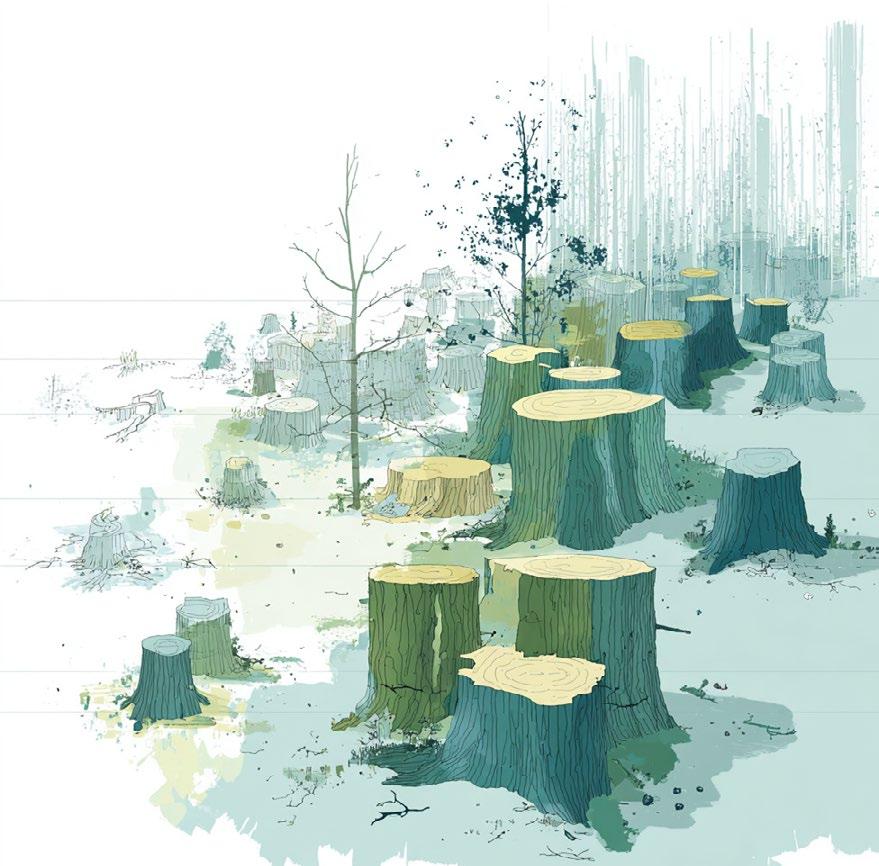


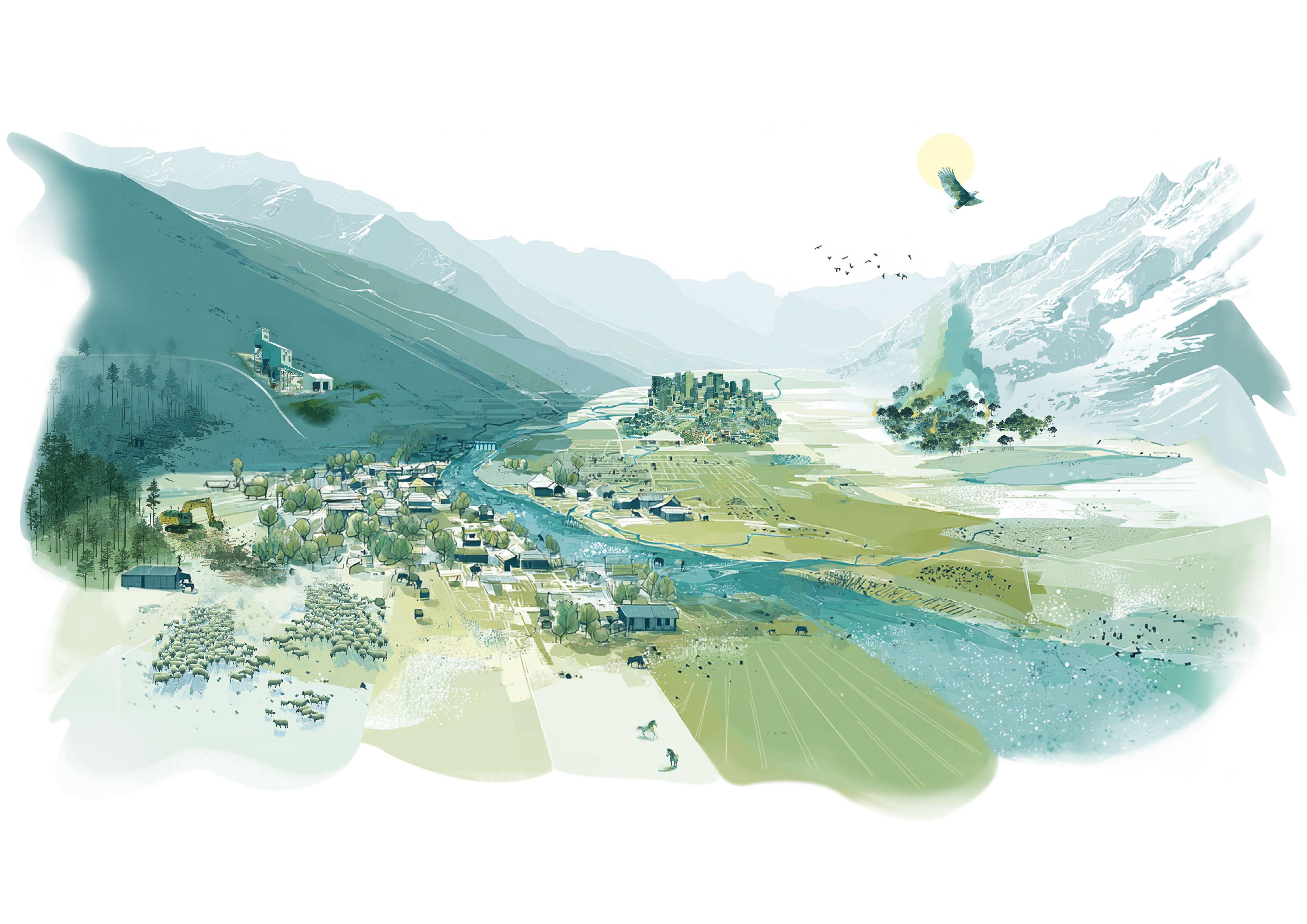


Overgrazing


Changes to the hydrological system


Genetic resource loss
3. Climate change and mismanagement of natural resources are driving a mountain biodiversity crisis
Mountain ecosystems are at the frontline of the global biodiversity crisis, with climate change, unsustainable land use, and inadequate conservation efforts accelerating ecosystem degradation, species loss, and the collapse of essential ecosystem services. These impacts undermine both ecological integrity and the well-being of millions of people who depend on mountain systems for water, food, energy, and cultural identity. Rising temperatures, shifting precipitation patterns, glacier retreat, and unsustainable land use are already degrading mountain habitats, driving upslope species migration, and intensifying biodiversity loss. However, mountain systems remain underrepresented in global assessments and climate models, and implementation efforts often lack coordination across sectors and administrative and elevational scales.
Glacier Retreat is exceptionally fast in mountain regions
Glacier retreat is occurring at exceptionally fast rates in mountain regions due to elevation-dependent warming— where temperature increases are amplified with altitude. This trend is particularly pronounced in the tropical highlands, where glaciers are retreating faster than the global average.
Accelerated glacier loss poses a major threat to alpine biodiversity. Post-glacial ecosystem assembly is notably slow, and positive biotic interactions— such as animal pollination, plant facilitation, and animal-mediated seed dispersal—are often limited in these newly exposed landscapes. This results in the accumulation of a “climatic debt”, where species and ecosystems lag behind the pace of climate change, increasing their vulnerability to further warming.
Cryosphere Loss and Ecosystem Vulnerability: the example of the Hindu Kush Himalaya
The Hindu Kush Himalaya (HKH) region—known as the “Third Pole” and the Water Tower of Asia—is home to rich biodiversity and diverse mountain ecosystems, with over 40% of its land under protected area status. Its cryosphere (glaciers, snow, permafrost, glacial lakes) plays a critical role in maintaining ecosystem health and sustaining over 240 million people locally, and 1.65 billion downstream.
However, the region is experiencing rapid cryosphere loss due to climate change, leading to glacier retreat, reduced snow cover, permafrost degradation, and more frequent natural hazards. These changes trigger cascading impacts on biodiversity and ecosystem services—such as shifts in
species ranges, habitat degradation, and increased invasion by alien species—further undermining the resilience of ecosystems and communities.
Future scenarios point to greater ecological disruption and social vulnerability unless urgent, regionally coordinated interventions are adopted. Nature-based solutions tailored to local contexts, grounded in ecosystem-based approaches, offer promising pathways. Strengthening science, investing in long-term monitoring, and advancing regional cooperation—as requested in the HKH Call to Action—are essential to safeguard this global mountain system and the people who depend on it.
4. Conservation of mountain ecosystems is essential for achieving global environmental goals
Conserving and restoring mountain ecosystems is indispensable to halting biodiversity loss and tackling the climate crisis. A complementary portfolio—protected-area management, ecological restoration, and nature-based solutions, underpinned by monitoring and research—builds ecosystem resilience and supports species persistence across mountain landscapes while delivering mitigation and adaptation co-benefits. Further, inclusive governance and the active engagement of mountain communities helps to ensure long-term sustainable management of natural resources and the integration of traditional and scientific knowledge.

Regional models for global goals: The Carpathian Biodiversity Framework and the Alpine Biodiversity Action Plan
In 2023, the Carpathian Convention adopted the Carpathian Biodiversity Framework (CBF)— becoming the first regional convention to establish its own biodiversity framework. The CBF is a milestone for the local-level implementation of the KM-GBF and provides a model for other mountain and regional governance mechanisms worldwide.
The CBF Vision 2050 envisions the Carpathians as a model mountain region where sustainable development goes hand in hand with nature conservation. To achieve this, it fosters joint activities across priority areas, while creating synergies with regional, European, and global biodiversity, climate, and sustainable development objectives. All Parties to the Carpathian Convention are also Parties to the CBD, ensuring strong alignment between the KM-GBF, the
EU Biodiversity Strategy for 2030, and regional priorities. Through its implementation, the CBF will significantly advance the KM-GBF and the 2030 Agenda for Sustainable Development, demonstrating the potential of regional frameworks to drive transformative biodiversity action.
Similarly, the Alpine Convention came forward to co-ordinate the implementation of the KM-GBF at the regional level. In early 2025, the Contracting Parties to the Alpine Convention adopted a policy brief to provide strategic guidance on translating global biodiversity goals to the Alpine level. These are now being defined by the Alpine Biodiversity Board in an upcoming Alpine Biodiversity Action Plan, showing that regional efforts can be concrete tools for implementing global biodiversity commitments.
Carpathian Mountains, © Oleksandr Rupeta
5. Mountain platforms play a pivotal
role in advancing biodiversity and climate action across all levels
Mountain platforms and networks — understood here as global or regional cooperation mechanisms, scientific networks, conventions, international agreements, and inter-regional initiatives dedicated to sustainable mountain development—are key enablers for mobilizing science-based, locally grounded action that advances both biodiversity and climate goals at different levels. Strengthening their reach and integration is a strategic investment in global environmental resilience. By coordinating data collection and monitoring, fostering knowledge exchange, and linking science with policy, these platforms and networks improve national and transboundary planning and generate evidence that directly supports the implementation of NBSAPs, NDCs, and regional climate-adaptation strategies. They also provide mechanisms for cross-scale policy alignment and sustained science–policy dialogue. By convening scientists, Indigenous Peoples and local communities, NGOs, practitioners, civil society, and government agencies, they promote inclusive governance and ensure diverse knowledge systems inform decisions— enhancing the legitimacy, relevance, and effectiveness of conservation and adaptation actions.
To ensure the success of these efforts, mountain platforms offer opportunities to address the following priorities:
● Support and expand long-term ecological monitoring (e.g. vegetation shifts, phenological changes, peat decomposition, hydrological regimes) to anticipate tipping points and inform adaptive management.
● Strengthen and coordinate transboundary research networks to support early warning systems and evidence-based planning in mountain regions.
● Enhance participatory governance mechanisms to ensure that local and Indigenous knowledge systems inform both policy and practice.
● Mainstream mountain-specific priorities in national and international climate and biodiversity frameworks through better data integration, regional cooperation, and investment in institutional capacities and multiscale policy dialogue.
The Role of Knowledge Networks in Monitoring Mountain Change and Informing Decisions
Knowledge networks and long-term observation initiatives are essential for understanding and responding to the complex impacts of climate change in mountain regions. These collaborative efforts generate critical data on biodiversity trends, ecosystem changes, and hydrological dynamics, providing the evidence base needed to inform policy and guide adaptation planning.
Long-term research and monitoring networks— such as GLORIA observatories in the Alps and the Andes, and regional initiatives like the Andean Forest Network and IMHEA—track species turnover, vegetation dynamics, changes in biomass, hydrology, and carbon balances across latitudinal and altitudinal gradients, offering early warnings of ecosystem
shifts. In Central Asia, monitoring networks in the Pamir and Tian Shan ranges document rapid glacier retreat and shifting river flows and the HKH HIMAP platform connects researchers, practitioners, and policy specialists in the region to work on monitoring and assessments.
Platforms and programs such as Adaptation at Altitude, the Mountain Research Initiative, GEOGloWS, GLOMOS, AMAP, CMA and the Network of Socioecological Observatories in the Andes (ROSA) play a pivotal role in synthesizing and disseminating this knowledge. By fostering science–policy dialogues, these networks strengthen regional cooperation and help safeguard mountain ecosystems and livelihoods.
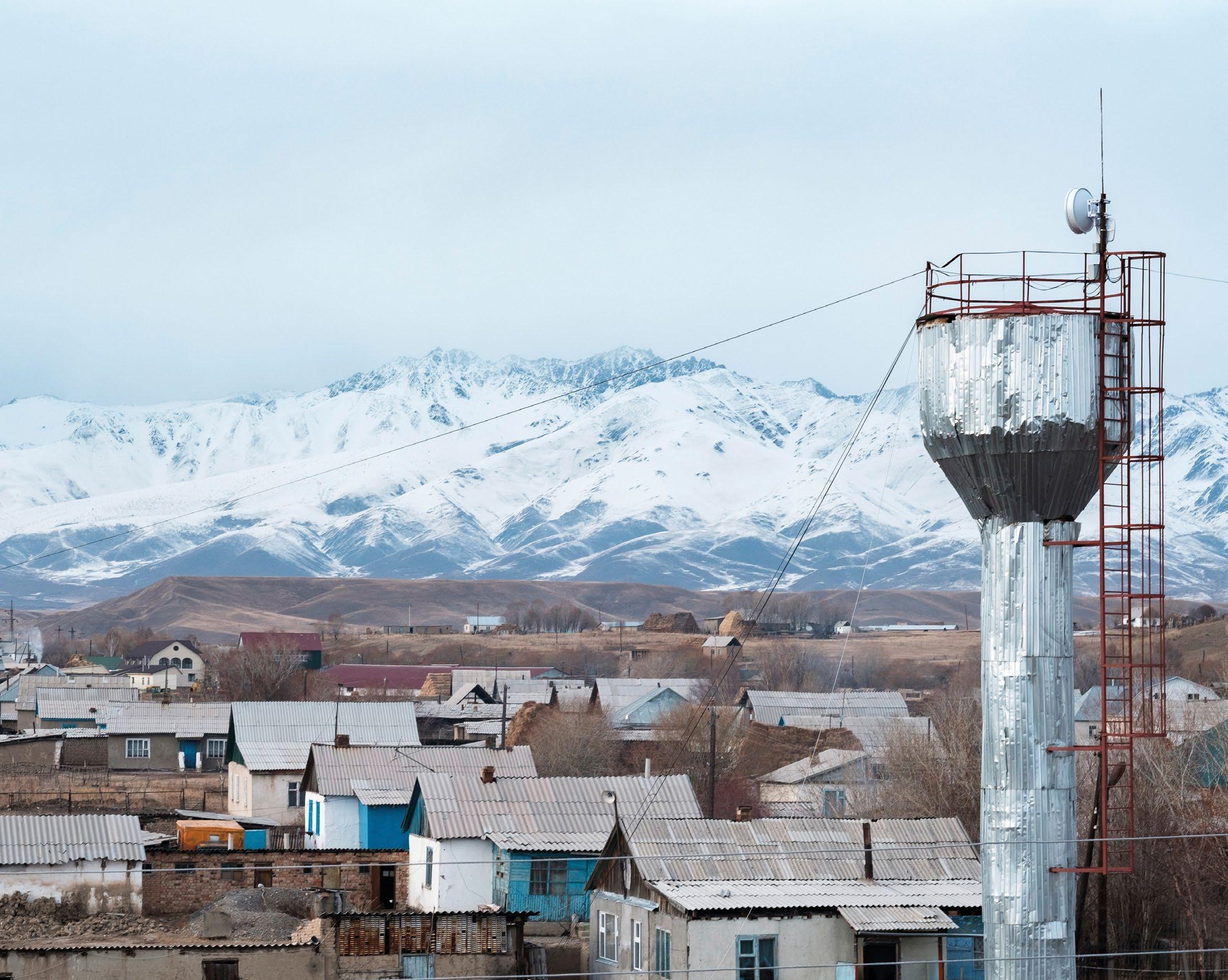
Suusamyr, Chuy Region, Kyrgyzstan, © Nyani Quarmyne
4. Policy recommendations and way forward
As implementation of the Kunming-Montreal Global Biodiversity Framework under the CBD and the Global Goal on Adaptation under the UNFCCC gains momentum, mountain ecosystems offer a unique opportunity to operationalize the climate–biodiversity nexus. They must be recognized as a strategic and cross-cutting priority. Their transboundary nature, biodiversity richness, ecological distinctiveness, and critical contributions to water security, food systems, and climate resilience position them as ideal ecosystems for achieving integrated climate and nature goals and advancing synergy between the two conventions.
Revitalizing the Mountains Agenda under the CBD
The CBD provides a unique opportunity to work on a mountain agenda and align it with the KM-GBF. While the Programme of Work (PoW) on Mountain Biological Diversity, adopted in 2004, was the first international framework dedicated to mountain ecosystems, it now needs to be updated to 2030 to more closely align with the goals and targets of the KM-GBF and address today’s ecological and social realities.
Revitalizing the Programme of Work must translate into concrete priority actions to stop and reverse biodiversity loss and complement efforts already underway in mountain countries and regions. Governments now have the opportunity to build on lessons from the PoW and existing mountain platforms to propose a streamlined, outcome-oriented set of priorities to address key drivers and reduce biodiversity loss in mountain ecosystems. This includes integrating mountain-specific indicators into the GBF monitoring framework, systematically reflecting mountain priorities in NBSAPs and promoting ecosystem- and nature-based approaches that strengthen biodiversity conservation and adaptation in mountain landscapes.
Inclusive governance is central to the success of a renewed mountains agenda. Ensuring the full and effective participation of Indigenous Peoples, local communities, women, and youth would not only improve legitimacy but also enhance the
effectiveness of biodiversity actions. Strengthening partnerships with regional mountain platforms is equally important, as these mechanisms can bridge local realities with global policy processes and provide vehicles for knowledge exchange, peer learning, and joint monitoring.
Committing to the implementation of a revitalized Programme of Work would secure continuity and coherence in implementation. Recognizing regional platforms within CBD decisions and mandating their contribution to implementation and reporting would create accountability and strengthen cross-regional collaboration. At the same time, mountains could serve as an entry point for advancing synergies with the UNFCCC, including through the development of a joint work programme on biodiversity and climate change that uses mountains as a pilot ecosystem for integrated action.
By renewing the Programme of Work and embedding mountains firmly within the KM-GBF, Parties can safeguard mountain ecosystems while leveraging them as strategic spaces for advancing biodiversity conservation, people’s well-being, sustainable development, and cross-convention collaboration. This would position mountains as critical contributors to the achievement of global biodiversity targets and as a model for integrated climate–nature solutions.
Advancing the Mountains Agenda under the UNFCCC
Mountains need to be more explicitly covered in national climate commitments. NDCs, NAPs, and Biennial Transparency Reports (BTRs) are natural vehicles to highlight mountain-specific vulnerabilities, ecosystem services, and priority measures—see, for example, Andorra’s First BTR to the UNFCCC or Chapter 5.5 of Azerbaijan’s Initial NAP. Leveraging global and regional monitoring networks—such as GLORIA, ILTSER, GEO-Mountains, ROSA, the Andean Forest Network, HIMAP and IMHEA— could help fill key information gaps and provide robust inputs to NBSAPs, NDCs, and adaptation communications.
The Global Goal on Adaptation (GGA) offers an important entry point for mountain-relevant indicators. Building on the consolidated list of indicators and ongoing work under the UAE–Belém Work Programme, Parties can support indicators that help report on the distinct vulnerabilities of mountain ecosystems - particularly those making reference to cryosphere protection, ecosystem service provisioning and regulation, ecosystem resilience, and data on climate risk information. These indicators help link biodiversity, resilience, and community well-being, providing a mountain perspective in the GGA framework. Further steps will need to be made looking beyond the UAE-Belém Work Programme to help integrate mountain priorities into reporting mechanisms for all countries where they are relevant.
The Nairobi Work Programme should continue serving as a platform to institutionalize mountain knowledge. Engaging with the NWP and ensuring
that Parties’ adaptation planning utilizes its mountain-specific resources allows for deeper integration of mountain issues in adaptation action. Further, the 2024 Expert Dialogue on Mountains and Climate Change created momentum that can be built upon. Science–policy dialogues on mountains, anchored in the NWP and contributing to its Adaptation Knowledge Portal, will help maintain mountain-specific expertise within UNFCCC processes, support iterative adaptation, and contribute to the implementation of the UAE Framework for Global Climate Resilience.
Future adaptation frameworks could provide further space for mountain–biodiversity linkages. The Baku High-Level Dialogue on Adaptation and the Baku Adaptation Roadmap, launched at COP29, offer timely opportunities to foster cooperation and ensure continuity in climate action for mountains along post-COP30 pathways. Sustained emphasis by upcoming UNFCCC presidencies—supported by mountain platforms and interested countries to surface priority issues in these dialogues—will help keep mountains on the agenda, particularly around water security, ecosystem-based adaptation, and resilience, and strengthen the recognition of mountains as vital ecosystems for achieving long-term UNFCCC adaptation goals. Given the importance of mountains for risk management, they should also be explicitly reflected in the Loss and Damage Fund—especially for habitat destruction and slowonset impacts (e.g., ecosystem shifts, increasing human–wildlife conflict, and accelerated extinction of heat-sensitive species leading to altered communities in high-mountain regions).
Fostering synergies between biodiversity and climate conventions
Mountains are not only at the frontlines of environmental and climate change—they are strategic leverage points for global action. As implementation of the KM-GBF under the CBD and the Global Goal on Adaptation, together with broader climate mitigation and adaptation objectives under the UNFCCC, gains momentum, mountain ecosystems offer a unique entry point to operationalize the climate–biodiversity nexus. Their transboundary nature, biodiversity richness, ecological distinctiveness, and critical contributions to water security, food systems, carbon storage, and resilience position them as priority ecosystems for fostering synergies between the two conventions.
An important opportunity lies in advancing a joint work programme on biodiversity and climate change under the CBD and UNFCCC. Anchoring mountains within such a programme would help operationalize the mandate of CBD COP16 Decision 22 while also responding to the outcomes of the first Global Stocktake, which emphasized the urgency of strengthening adaptation and safeguarding vulnerable ecosystems. By positioning mountains as a pilot ecosystem for integrated climate–biodiversity action, Parties could harness existing regional governance structures and build a replicable model of ecosystem-based cooperation—enhancing synergies, policy coherence, and implementation capacity across frameworks, from NBSAPs and NDCs to national adaptation strategies.
Mountain ecosystems also provide natural platforms for nature-based solutions, given their multifunctionality in mitigation, adaptation, and biodiversity conservation. Elevating their role in a joint programme would strengthen coherence across conventions while generating tangible co-benefits for people, nature, and climate.
Mountains illustrate the importance of regional cooperation. Cross-border collaboration enables countries to share data, exchange expertise, and coordinate investments. Such cooperation is essential for implementing ecological restoration at the scale required for maximum impact and for advancing transboundary risk management, thereby creating new pathways for progress on adaptation, resilience, and loss and damage.
A coalition of champion countries and regions could further accelerate this agenda. By raising the political profile of mountain ecosystems and advocating for their stronger integration across both conventions, such a coalition would help mobilize resources, advance technical proposals, and promote mountain-based cooperation. In doing so, it could position mountains as a model for ecosystem-based action and as a driver of climate–biodiversity synergies aligned with the goals of the GBF and the Paris Agreement and relevant SDGs (1, 3, 13, 15, 17).
Leveraging platforms and networks for implementation and advocacy
Mountain platforms and networks are critical for connecting global frameworks with grounded action. Their experience across regions such as the Alps, Andes, Carpathians, Himalayas, Central Asia, Caucasus, East Africa, and globally demonstrates effective models for implementation, peer learning, and policy coherence.
Strengthening mountain platforms within the CBD and UNFCCC frameworks is both timely and essential. By leveraging their comparative experience, advancing local-global level work, and mobilizing partnerships, mountain platforms can serve as a flagship for climate–nature integration and as a catalyst for global ambition. The role of these platforms in connecting science, policy, and local communities offers a unique pathway to accelerate the implementation of the KM-GBF and the Paris Agreement, while ensuring that mountain ecosystems and the people who depend on them are not left behind.
Existing platforms are also drivers of innovation in monitoring, assessment, and science–policy dialogue. Many platforms already host consolidated exchanges between scientists and policymakers, such as the AMI Dialogues, the Science and Knowledge Advisory Committee of the Mountain Partnership, the Science for the Carpathians Forum, the Caucasus Mountain Forum, or the HKH Science-Policy Forum which provide tested models for connecting knowledge with policy and inform decision-making processes. Regional initiatives like CMA, AMAP, HIMAP, ROSA, the Andean Forest Network, and IMHEA, alongside global networks such as GLORIA, ILTER, GLOMOS, and GEOMountains, offer established mechanisms for coordinated monitoring. Their outputs could feed directly into NBSAPs, NDCs, and adaptation communications, helping to strengthen coherence between local realities and global frameworks.
Mountain platforms can contribute to global assessments and dialogues, particularly through their engagement with IPBES, the IPCC-AR, and the Global Environment Outlook. Their involvement ensures that mountain issues are systematically reflected in global assessments and that biodiversity and climate interlinkages are better integrated into international science–policy processes. Advocating for dedicated IPCC chapters on mountains — building on earlier assessments, the 1995 IPCC Synthesis Report, and the AR6 WGII Cross-Chapter Paper on Mountains — together with stronger climate–biodiversity integration across multilateral platforms would improve risk knowledge, strengthen information flows, and support more informed decision-making.
These governance structures create space for the perspectives of Indigenous Peoples, local communities, and other rightsholders to be amplified in global forums. By fostering bottom-up approaches, they help ensure that biodiversity and climate action are not only effective but also fair and inclusive. This inclusive governance dimension reinforces the legitimacy of global processes and increases the chances of durable outcomes on the ground.
To institutionalize this role, mountain platforms could take responsibility for maintaining a permanent coordination mechanism—anchored either in a revitalized Programme of Work on Mountain Biological Diversity under the CBD or as an initiative that promotes articulated work and links CBD–UNFCCC (like an advisory group on mountain ecosystems) —to ensure continuity, cross-regional collaboration, and sustained political visibility for mountains in global governance.
Integrated, science-based management of mountain landscapes is essential to safeguard biodiversity, strengthen climate resilience, and advance sustainable development. Prioritizing mountains in national policies and global frameworks offers a strategic pathway to deliver on international commitments. Embedding mountain ecosystems more explicitly in Parties’ commitments under the conventions would foster stronger alignment between climate and biodiversity agendas while facilitating concrete action on the ground.
As the implementation of the KM-GBF and the Paris Agreement continue, mountain ecosystems must be recognized as a global conservation priority. They are among the most vulnerable regions to climate change, yet their ecological richness and critical role in providing water, food, and other ecosystem services make them indispensable for global resilience. Elevating mountains within these frameworks is therefore both an urgent necessity and a strategic opportunity to advance integrated solutions for people, nature, and climate.
Within this collaborative landscape, the Adaptation at Altitude programme, initiated and supported by the Swiss Agency for Development and Cooperation works to enhance the resilience and adaptive capacity of mountain communities and ecosystems by strengthening evidence-based decision-making, regional governance, and knowledge exchange, while supporting advocacy efforts to ensure the integration of mountain adaptation into global climate and biodiversity frameworks.
This policy brief was developed with contributions from different organizations and platforms.




